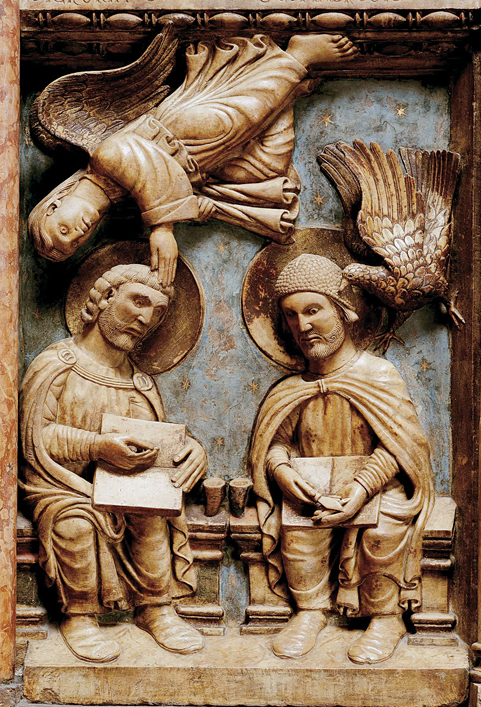A History of World Societies:
Printed Page 215
A History of World Societies Value
Edition: Printed Page 211
The Western Church and the Eastern Church
The leader of the church in the West, the bishop of Rome, became more powerful than his counterpart in the Byzantine East for a variety of reasons. Most significantly, bishops of Rome asserted that Rome had a special place in Christian history. According to tradition, Saint Peter, chief of Jesus’s disciples, had lived in Rome and been its first bishop. Thus, as successors of Peter, the bishops of Rome — known as popes, from the Latin word papa, meaning “father” — claimed a privileged position in the church hierarchy, an idea called the Petrine Doctrine. They urged other churches to appeal to Rome for the resolution of disputed issues and sent letters of guidance to other bishops. (The Christian Church headed by the pope in Rome was generally called the Roman Church in this era, and later the Roman Catholic Church. The word catholic derives from a Greek word meaning “general,” “universal,” or “worldwide.”)

The popes also expanded the church’s secular authority. They made treaties with barbarian leaders, charged taxes, enforced laws, and organized armies. The Western Christian Church headed by the pope in Rome would become the most enduring nongovernmental institution in world history.
By contrast, in the East the emperor’s jurisdiction over the church was fully acknowledged, even though the bishops of Antioch, Alexandria, Jerusalem, and Constantinople had more power than other bishops. As in Rome, there was a head of the church in Constantinople, called the patriarch, but he did not develop the same powers that the pope did in the West because there was never a similar power vacuum into which he needed to step. He and other high church officials were appointed by the emperor. The Eastern emperors looked on religion as a branch of the state, and they considered it their duty to protect the faith not only against heathen outsiders but also against heretics within the empire. Following the pattern set by Constantine, the emperors summoned councils of bishops and theologians to settle doctrinal disputes. They and the Eastern bishops did not accept Rome’s claim to primacy, and gradually the Byzantine Christian Church, generally called the Orthodox Church, and the Roman Church began to diverge. (Orthodoxy with a capital O refers to the Eastern Church, and orthodoxy with a lowercase o means correct doctrine as defined by church leaders.) In addition, other branches of Christianity in the East, including the Nestorians, Maronites, and Copts, developed their own distinctive theological ideas and patterns of organization. Some of these later joined with Roman Catholicism and affirmed the primacy of the pope, but many remain independent branches of Christianity today. About 20 percent of the population of Lebanon in 2010, for example, was Maronite Christian, and about 10 percent of the population of Egypt was Coptic Christian.